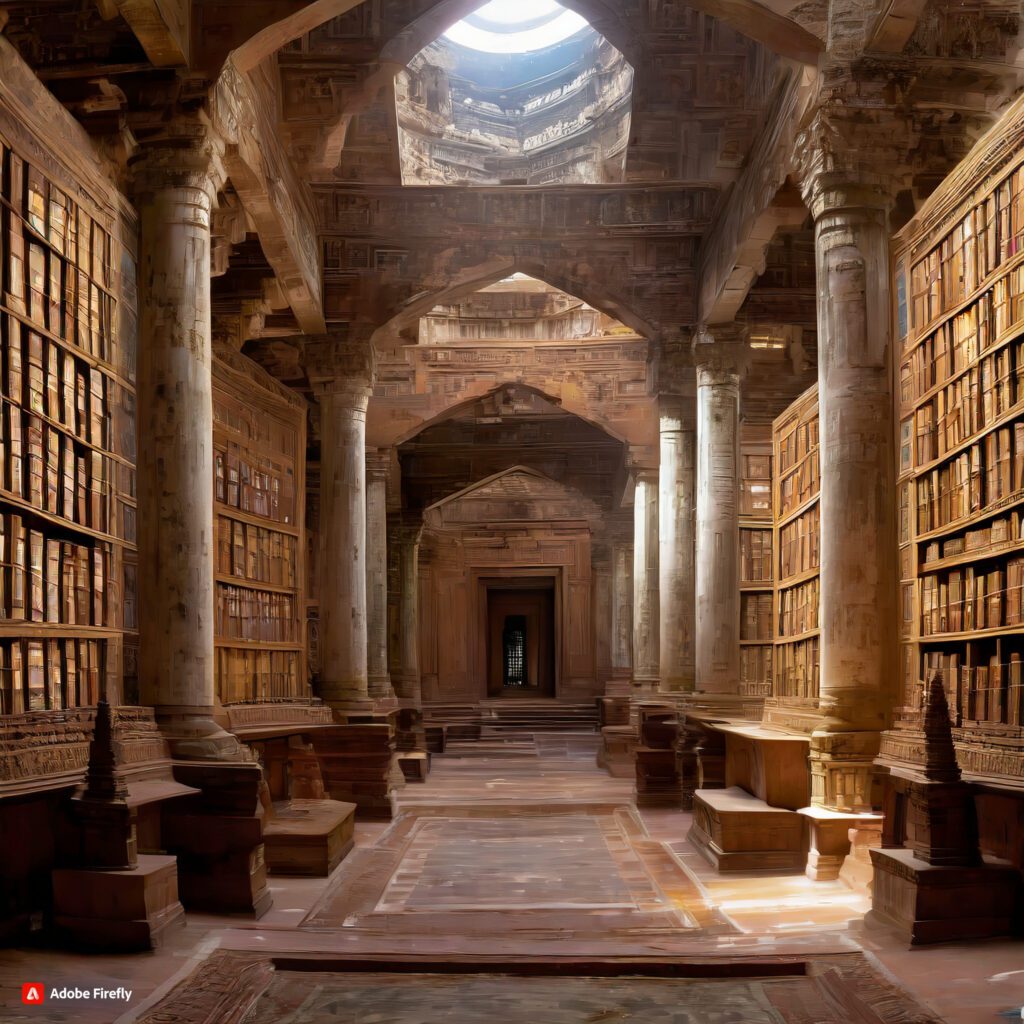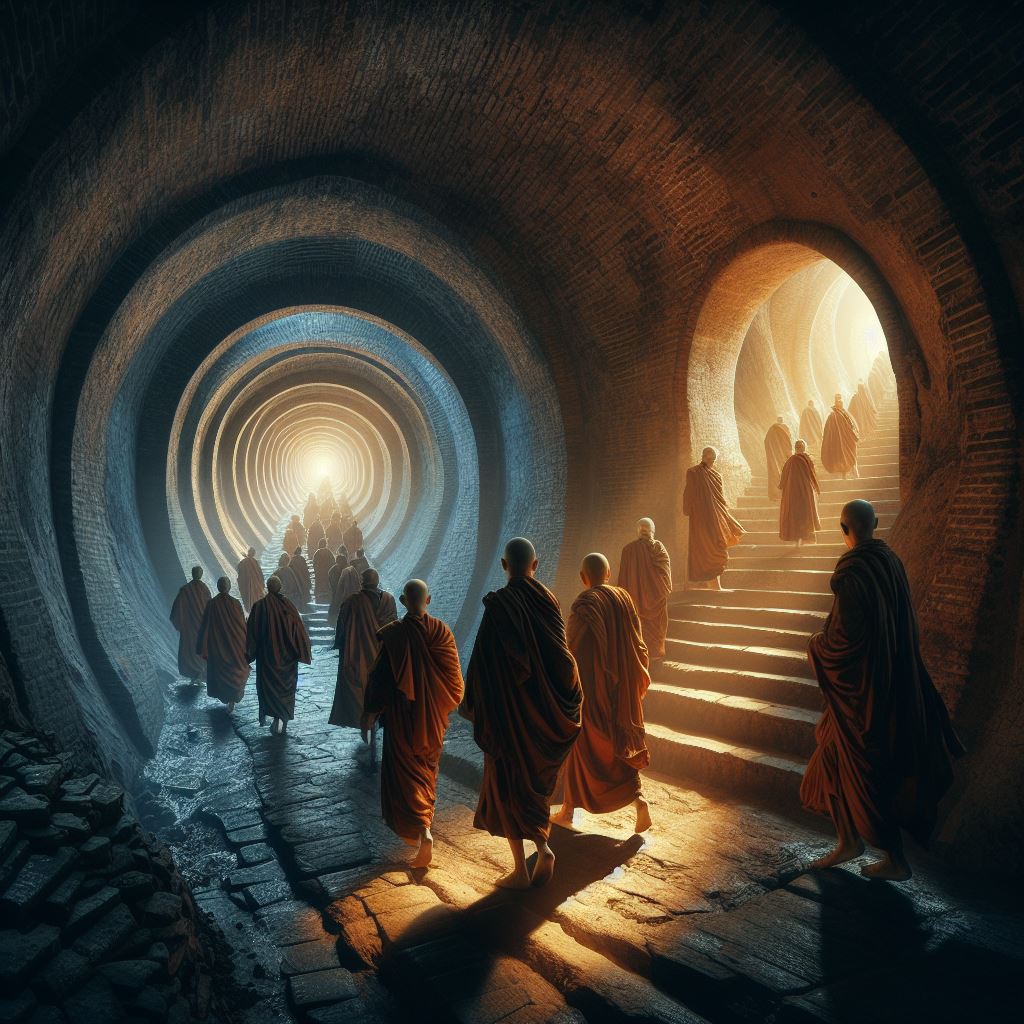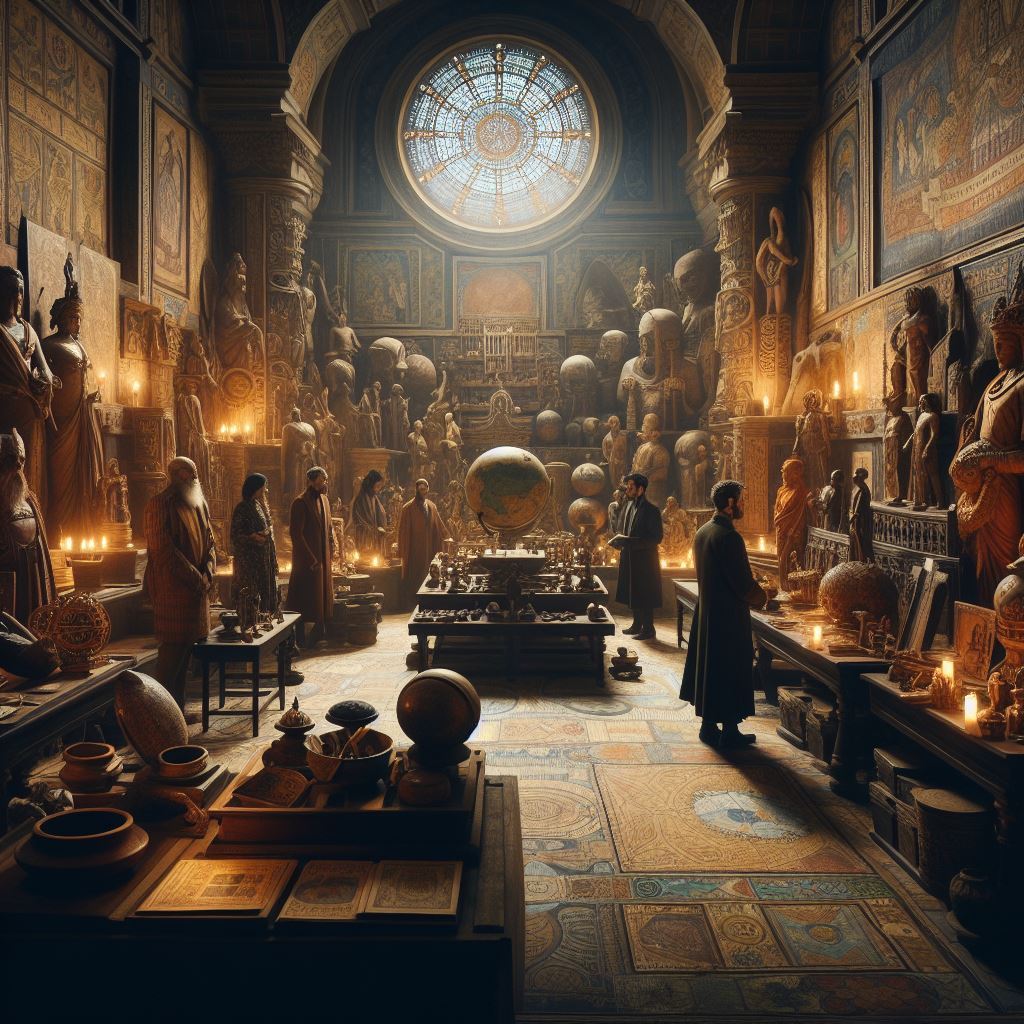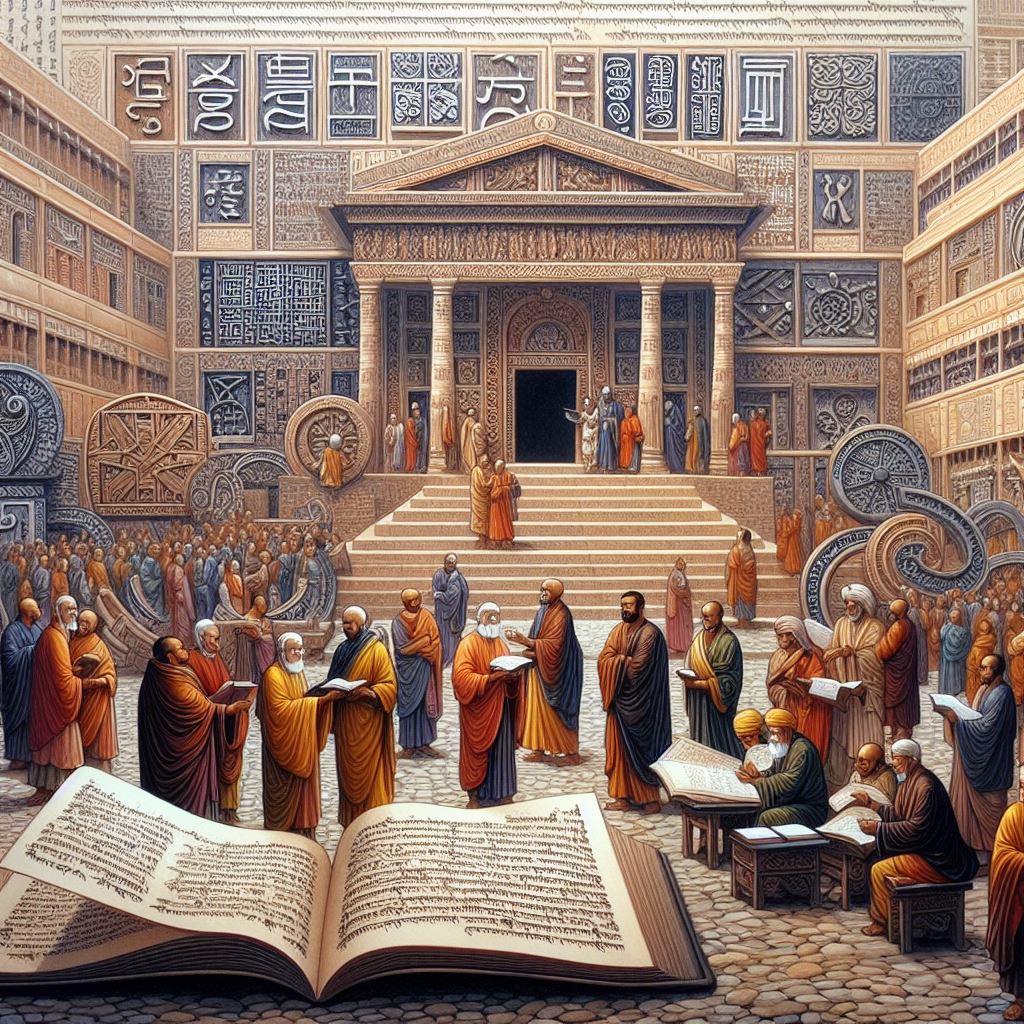Table of Contents
Exploring Nalanda: Revealing 10 Hidden Secrets
Nalanda University in India has an incredible history as one of the first major learning centres over 1500 years ago. Students travel from all across Asia to study at this prestigious university. It was home to a massive library filled with thousands of books and manuscripts. Though Nalanda was eventually destroyed in the 12th century, archaeologists have discovered many of its secrets in recent excavations. Let’s uncover 10 fascinating secrets about this ancient university. From hidden tunnels to alchemy labs, Nalanda has many surprises waiting to be rediscovered.
The Lost Library: Where Ancient Stories Are Kept

During excavations beneath the ruins, archaeologists unearthed the buried remains of Nalanda’s vast library. This architectural marvel likely held hundreds of thousands of manuscripts and books, making it one of the largest collections of knowledge in the ancient world. Though most works were destroyed over time, those remain provide a glimpse into the impressive breadth of writings gathered at Nalanda. Historians are piecing together tales from centuries past, from religious texts to early scientific discoveries. This lost library is a time capsule holding the fascinating secrets of ancient knowledge.
Secret Tunnels: How People Moved in Secret
During excavations, archaeologists discovered a maze of underground tunnels connecting different parts of Nalanda University. These tunnels allowed monks, scholars, and other residents to move secretly between buildings and restricted areas. Some tunnels may have led to hidden meditation chambers or private meeting rooms used by top academics. Other passages likely offered escape routes if the campus was ever threatened.

These underground tunnels hint at the hidden networks and clandestine activities taking place at the ancient university. What secret discussions or forbidden knowledge were shared in these hidden underground rooms? The tunnels suggest Nalanda had mysteries known only to a select few.
Astronomical Marvels: Nalanda’s Hidden Star Watchers
Archaeological digs have unearthed elaborate astronomical instruments and observatories used by scholars at Nalanda University. Complex structures for observing the heavens indicate astronomy and astrology were important fields of study. Some discoveries include ingenious sundials, astronomical measuring tools, and early sextants and astrolabes.

This shows Nalanda had advanced astronomy knowledge centuries before modern science. Why did they devote resources to studying the skies and charting celestial movements? Perhaps they used astrology to predict the future or sought greater cosmic wisdom. These astronomical marvels reveal Nalanda’s monks were advanced stargazers centuries ahead of their time. What other space secrets do these relics reveal about Nalanda’s star watchers?
Alchemy Chambers: Where Science Met Magic

During excavations of Nalanda’s ruins, archaeologists uncovered secret chambers that seem to be ancient alchemy labs. These rooms contained furnaces, vials, and equipment for distilling potions and chemicals. Nalanda scholars were actively experimenting with alchemy, an early form of chemistry intertwined with philosophy and mysticism. What were they attempting to transmute in these labs? Were they seeking to turn base metals into gold, create elixirs for immortality, or discover the philosopher’s stone? The alchemy chambers reveal Nalanda not only advanced practical science but delved into its magical dimensions too. This mind-bending blend of empiricism and arcane arts exemplifies Nalanda’s openness to forbidden subjects. Further study of these alchemy rooms may unlock more of Nalanda’s mystical scientific secrets.
Mysterious Artefacts: Objects from Faraway Places
Nalanda University attracted students and scholars from across Asia, resulting in a diverse campus with global influences. Archaeological digs have uncovered artefacts, art, and architecture from cultures spanning the continent. Nalanda housed collections of sculptures from Gandhara, silk paintings from China, and decorative metalworks from Central Asia. The university also blended architectural styles from different regions.

What was the significance of these exotic objects and designs? Were they simple cultural artifacts or did they hold deeper meaning? Perhaps they represent early diplomatic gifts or offerings from visiting scholars. These mysterious items provide a window into Nalanda’s connection with other cultures and its position as a cosmopolitan oasis. Further study of these artefacts may reveal more about Nalanda’s relationship with the wider world.
Forgotten Herbal Gardens: Nature’s Medicine Cabinet
Excavations have revealed a network of walled gardens at Nalanda University filled with medicinal plants and herbs. Scholars carefully cultivated these botanical collections to create natural pharmacies for treating ailments. Many plants were imported via trade routes from distant regions. Documentation shows Nalanda cultivated everything from Chinese ginseng to Indian sandalwood for its healing properties.

Monks prepared herbal concoctions, salves, and early medicines from these gardens. The diverse plants hint at vast medical knowledge preserved over centuries. Further DNA testing and cross-referencing ancient texts may unlock the lost holistic remedies of Nalanda’s herbalists. These forgotten gardens ultimately contained powerful cures that modern medicine is still deciphering today. Nalanda’s herbal wisdom remains ahead of its time.
Underground Lecture Halls: Where Learning Went Deep
Archaeological excavations have revealed a maze of subterranean rooms and caverns beneath Nalanda University. These underground spaces show signs of being used as lecture halls, classrooms, and study areas. Monks and students likely gathered by candlelight in these cave-like rooms to listen to scholars’ lectures far from distraction. The cool quiet darkness promoted intense focus and contemplation.

Were these secret catacombs used to teach restricted knowledge away from prying eyes? Did monks debate forbidden theories or practice mystical arts here? The underground halls suggest Nalanda had a whole parallel world of learning beneath the surface. We can only speculate what teachings these chambers held as monks probed the depths of knowledge by dim candlelight deep below ground.
Multilingual Scripts: Nalanda’s Language Mix
Nalanda University attracted students across Asia, leading to a thriving multilingual environment. Archaeologists have uncovered writings in Sanskrit, Tibetan, Chinese, Arabic, and many Indian languages. Stone inscriptions, texts, and student notes reveal most scholars were multilingual. This language diversity shows Nalanda’s openness to teaching students of all backgrounds. The university likely had translators to aid communication and learning.

Why was language integration important? Perhaps it allowed the exchange of ideas and texts from different cultures. Or helped unify diverse groups under a common tongue. The language blending further made Nalanda a cultural crossroads. Further linguistic analysis may reveal more about how Nalanda promoted communication and understanding through its multilingual milieu. This script diversity reflects the breadth of academic exchange that occurred.
Time Capsules: Letters from the Past
One amazing find during excavations was the discovery of small concealed chambers filled with scrolls, manuscripts, and personal letters of monks and scholars. These accidental time capsules provide a personal glimpse into life at ancient Nalanda. The letters reveal the writers’ daily routines, challenges, joys, and reflections. We learn about their studies, religious rituals, teacher interactions, and campus occurrences.

These unfiltered accounts offer a first-hand perspective from centuries past. Combined with archaeology, the letters help recreate and humanize Nalanda’s history. They transform it from a dry ancient ruin into a vibrant intellectual community. Further examination of the letters may provide a more intimate understanding of this influential centre of learning at its peak. This priceless written record preserves Nalanda’s legacy in its scholars’ own words.
Conclusion
Nalanda University was an influential centre of learning whose secrets are still being uncovered today. Excavations continue to find hidden libraries, astronomical tools, mystical labs, and lost writings that reveal Nalanda’s true depths. From ancient lore to early scientific innovation, Nalanda was a wellspring of knowledge. Its progressive multilingual and multicultural environment encouraged the exchange of ideas across Asia.
While many of its mysteries faded with its passing centuries ago, ongoing archaeological detective work is piecing together more of Nalanda’s forgotten genius. Each new secret uncovered offers another clue into this ancient universality’s astonishing intellectual history and impact. Nalanda’s legacy lives on as scholars synthesize its secrets into our collective understanding of the origins of philosophy, science, mathematics, and more.
Read more about Nalanda University by clicking here
Want more deeper knowledge about INDIAN HISTORY then click here
Key Points for the Blog
- Nalanda University was a thriving centre of learning, attracting students from all over Asia.
- The university was known for its extensive library, which contained thousands of texts on various fields of knowledge.
- Nalanda University was eventually destroyed in the 12th century by the armies of Mongol ruler Genghis Khan.
- The ruins of Nalanda University provide an important opportunity to study this lost world and to learn from its historical value.
- The university’s legacy lives on as scholars synthesize its secrets into our collective understanding of the origins of philosophy, science, mathematics, and more.
FAQS
1. What was Nalanda University known for?
Nalanda University was known for its extensive library, which contained thousands of texts on various fields of knowledge, including mathematics, grammar, astronomy, and others. It was a thriving centre of learning, attracting students from all over Asia
2. What happened to Nalanda University?
Nalanda University was eventually destroyed in the 12th century by the armies of Mongol ruler Genghis Khan. Most of its library, professors, and students were massacred, and its ruins were left to be rediscovered centuries later
3. Where was Nalanda University located?
Nalanda University was located in Bihar, India, and was founded in 548 AD
4. What languages were taught at Nalanda University?
Nalanda University attracted students from across Asia, leading to a thriving multilingual environment. Archaeologists have uncovered writings in Sanskrit, Tibetan, Chinese, Arabic, and many Indian languages
5. What were some of the subjects taught at Nalanda University?
Some of the subjects taught at Nalanda University included mathematics, grammar, astronomy, and other fields of knowledge




